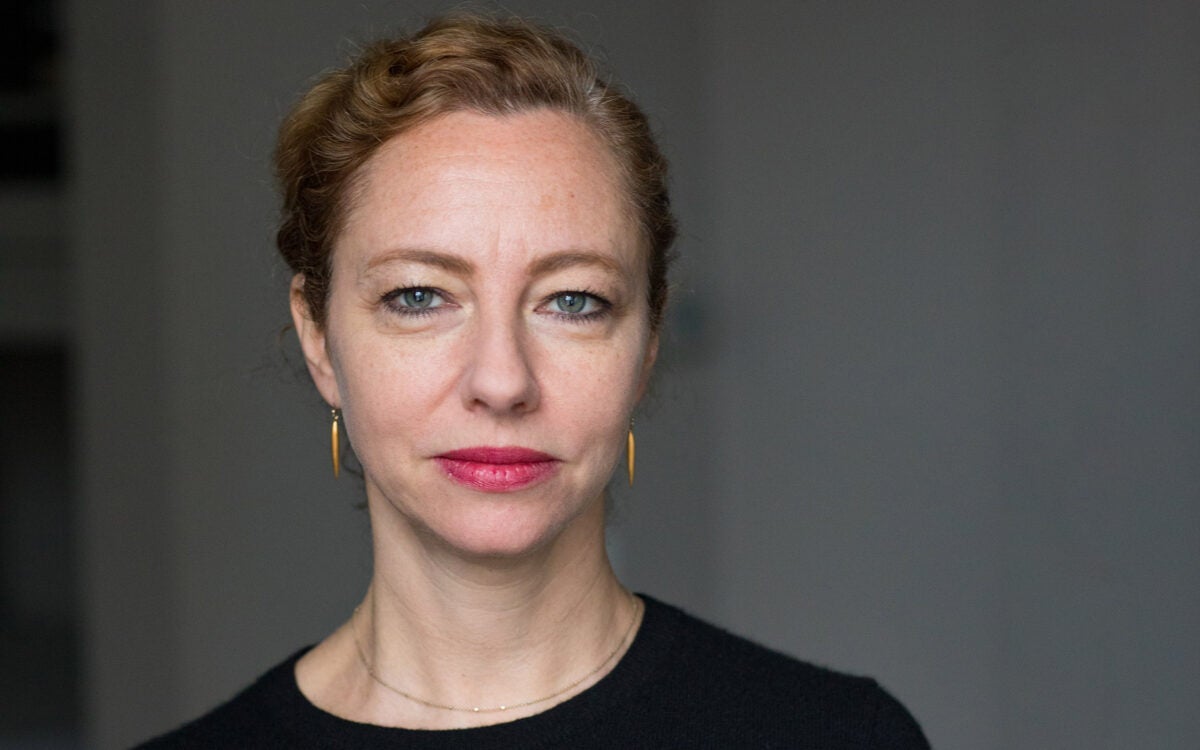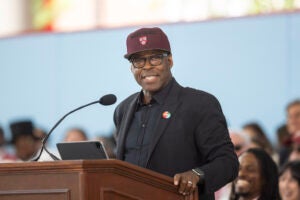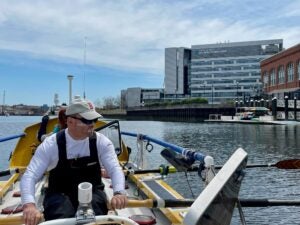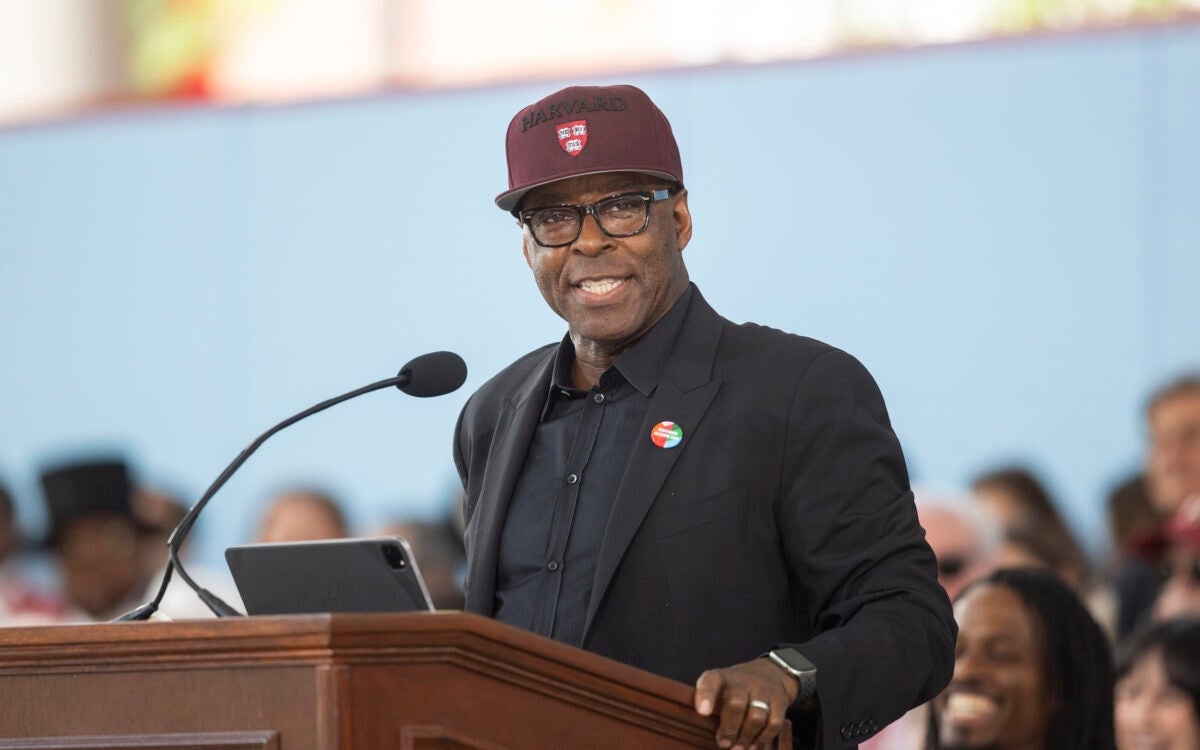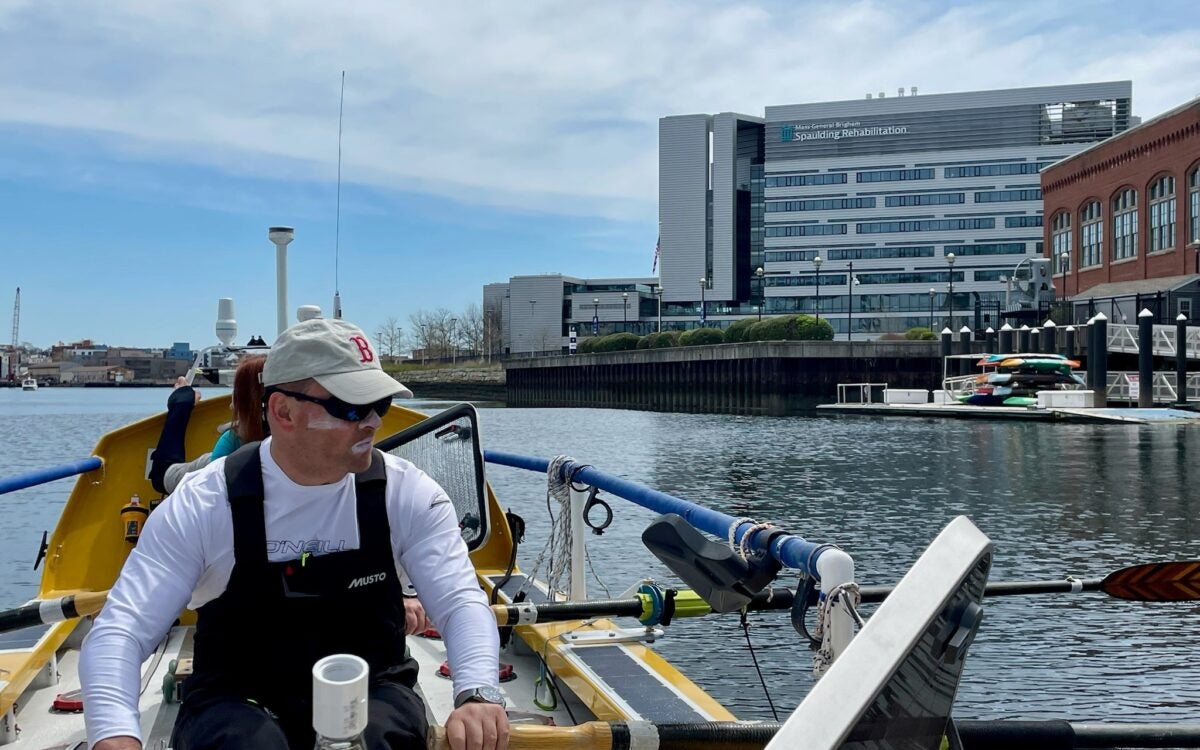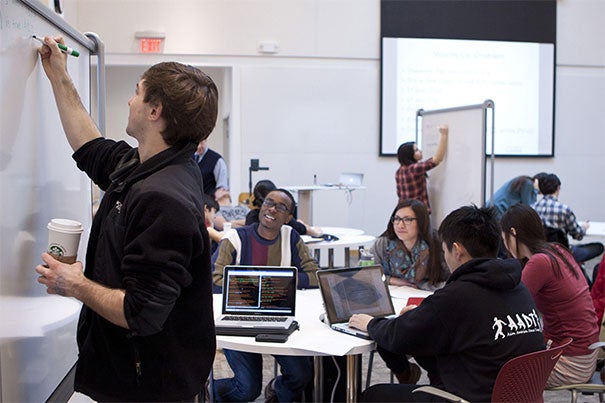
The Harvard Paulson School of Engineering and Applied Sciences is adding five faculty members this fall as it expands its computer science strengths. “A defining characteristic of our computer science program is that it is outward-facing,” said Francis J. Doyle III, the John A. Paulson Dean of SEAS.
File photo by Eliza Grinnell/SEAS Communications
SEAS adds to faculty
Rapidly growing School expands its depth in computer science
Five computer scientists will join the faculty of the Harvard Paulson School of Engineering and Applied Sciences (SEAS) this fall, as part of a plan funded by former Microsoft CEO Steve Ballmer to increase by 50 percent the size of Harvard’s computer-science faculty.
The new faculty members are Boaz Barak and Madhu Sudan, both Gordon McKay Professor of Computer Science; Scott Kuindersma, assistant professor of engineering and computer science; James Mickens, associate professor of computer science; and Alexander “Sasha” Rush, assistant professor of computer science.
Adding Barak and Sudan to the faculty builds on a long tradition of excellence in theoretical computer science at Harvard.
“A defining characteristic of our computer science program is that it is outward-facing,” said Francis J. Doyle III, who became the John A. Paulson Dean of SEAS last month. “Our faculty collaborate with colleagues across Harvard — from law, medicine, government, and business to the social sciences and humanities. I am confident that these superb additions to our computer-science faculty will complement our interdisciplinary approach and make important contributions to the field.”

“Computer science at Harvard today is small, but excellent,” Ballmer said when he announced his game-changing gift last year. “It already punches above its weight. With depth in systems, data, machine learning, and artificial intelligence, it is focused on high-impact specialties that are literally changing the world.”
The rapidly growing SEAS is the newest of the University’s 12 Schools, having transitioned in 2007 from a division to its current status. It was renamed the Harvard Paulson School in June in recognition of a $400 million endowment gift, the largest in Harvard’s history, from John A. Paulson, M.B.A. ’80.
The number of undergraduate computer-science concentrators has increased by a factor of four since 2007, and the percentage of female students has also grown. Meanwhile, more Harvard students pursuing other disciplines are enrolling in CS courses.
In the coming years, computer science and other parts of SEAS will expand into new, state-of-the-art facilities on Harvard’s campus in Allston.
For more on these and other SEAS appointments, visit here.
